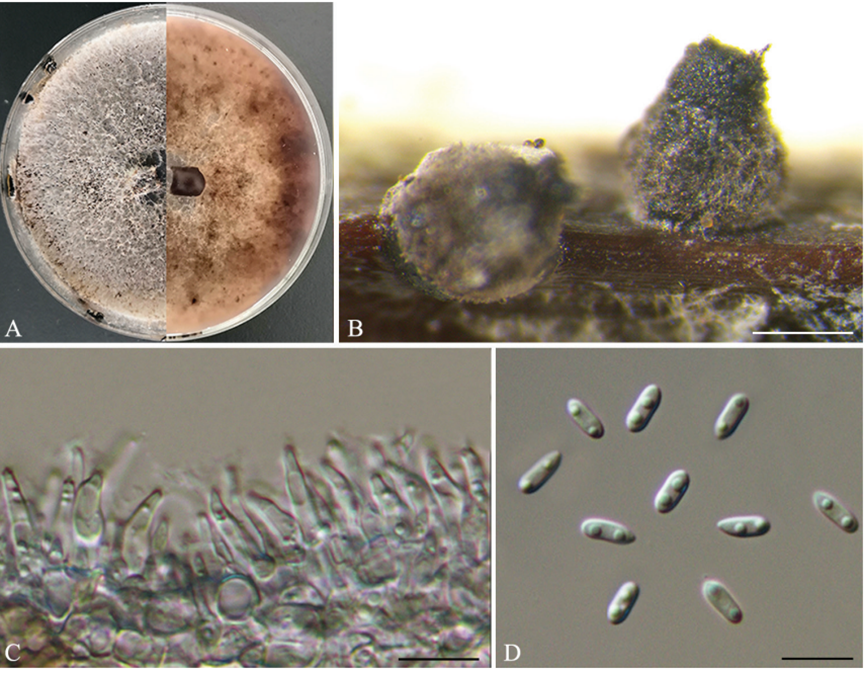 82
82
Diaporthe hubeiensis Dissanayake, X.H. Li & K.D. Hyde2021
MycoBank No:
Holotype:
Morphological description
Asexual morph: pycnidia on PDA in culture, 700–885 μm in diam., superficial, scattered, dark brown to black, globose or subglobose. Conidiophores reduced to conidiogenous cells. Conidiogenous cells (6.5–)7–10(–11.5) × 2–3.5 μm (n = 30), aseptate, cylindrical, phiailidic, straight or slightly curved. Alpha conidia 5.8–8(–8.5) × 2.5–3.2 μm (n = 30), aseptate, hyaline, ellipsoidal to cylindrical, biguttulate, blunt at both ends. Beta conidia not observed
Sexual morph: Undetermined.
Culture characters. Culture incubated on PDA at 25 °C, originally flat with white felted aerial mycelium, becoming dark brown mycelium due to pigment formation, conidiomata irregularly distributed over agar surface after 20 days.
Habitat: , on leaves of Camellia oleifera,
Distribution: China. Hunan Province: Zhuzhou City
GenBank Accession: : HNZZ019 and HNZZ009)
Notes: Diaporthe hubeiensis was originally described as pathogen of grapevines in Hubei Province, China (Manawasinghe et al. 2019). In the present study, two isolates (HNZZ019 and HNZZ009) are closely related to D. hubeiensis in the combined phylogenetic tree (Fig. 1). The differences of nucleotides in the concatenated alignment (1/460 in ITS, 3/458 in cal, 1/320 in his3 and 3/433 in tub2) are minor. Morphological comparison indicated that the isolates were similar to D. hubeiensis by the size of alpha conidia. We therefore identify the isolates as belonging to D. hubeiensis.
Reference:[1] Mi, L. I. , Zhen, H. E. , Xiaowu, L. , Yonggang, X. , Xuewu, Y. , & Academy, H. F. . (2015). Investigation on resources and appraisal of dominant species of natural enemies in camellia oleifera forests in hunan province. Hunan Forestry Science & Technology.

Diaporthe hubeiensis (HNZZ019) A Culture on PDA B conidiomata C conidiogenous cells D alpha conidia. Scale bars: 500 μm (B); 10 μm (C–D).

